-
 Bitcoin
Bitcoin $114400
0.68% -
 Ethereum
Ethereum $3550
2.48% -
 XRP
XRP $3.001
4.99% -
 Tether USDt
Tether USDt $0.9999
0.01% -
 BNB
BNB $757.6
1.46% -
 Solana
Solana $162.9
1.07% -
 USDC
USDC $0.9998
0.00% -
 TRON
TRON $0.3294
0.91% -
 Dogecoin
Dogecoin $0.2015
2.46% -
 Cardano
Cardano $0.7379
2.01% -
 Stellar
Stellar $0.4141
8.83% -
 Hyperliquid
Hyperliquid $37.83
-1.91% -
 Sui
Sui $3.454
0.76% -
 Chainlink
Chainlink $16.62
3.53% -
 Bitcoin Cash
Bitcoin Cash $554.6
2.84% -
 Hedera
Hedera $0.2486
3.91% -
 Ethena USDe
Ethena USDe $1.001
0.00% -
 Avalanche
Avalanche $21.95
3.34% -
 Toncoin
Toncoin $3.563
-2.85% -
 Litecoin
Litecoin $112.7
2.65% -
 UNUS SED LEO
UNUS SED LEO $8.977
0.13% -
 Shiba Inu
Shiba Inu $0.00001232
1.85% -
 Uniswap
Uniswap $9.319
2.93% -
 Polkadot
Polkadot $3.632
1.38% -
 Monero
Monero $307.2
2.36% -
 Dai
Dai $0.9997
-0.03% -
 Bitget Token
Bitget Token $4.340
0.91% -
 Pepe
Pepe $0.00001048
1.07% -
 Cronos
Cronos $0.1348
3.26% -
 Aave
Aave $261.5
1.93%
How do NFT Derivatives create new assets based on existing NFTs?
NFT derivatives, like fractionalized ownership, options, and futures, expand NFT market accessibility and liquidity by creating new tradable assets based on existing NFTs, though regulatory uncertainty remains a key risk.
Mar 05, 2025 at 01:24 pm
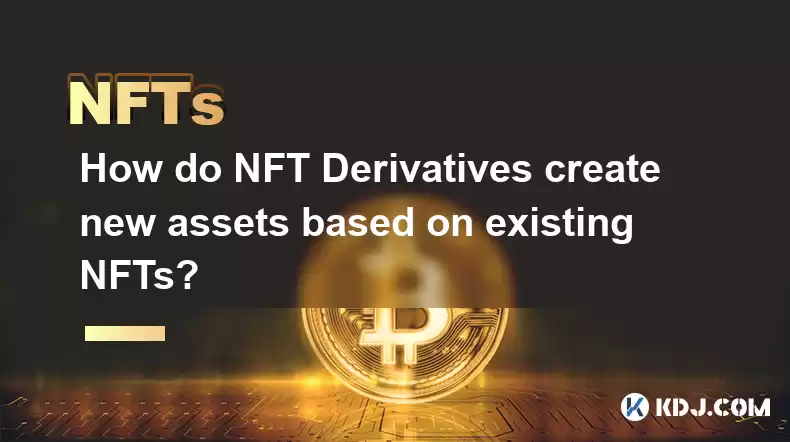
Key Points:
- NFT derivatives leverage existing NFTs to create new, tradable assets.
- This is achieved through various methods, including fractionalization, options, and futures contracts.
- These derivatives offer increased liquidity, accessibility, and investment opportunities within the NFT market.
- Understanding the underlying NFT and the derivative's terms is crucial for risk management.
- Regulatory uncertainty remains a significant factor in the NFT derivatives market.
How do NFT Derivatives Create New Assets Based on Existing NFTs?
The burgeoning world of NFTs has opened up exciting avenues for innovation, and one of the most promising is the emergence of NFT derivatives. These are financial instruments whose value is derived from an underlying NFT. They don't represent ownership of the original NFT, but rather a claim on its value or future performance. This allows for a wider range of participation and investment strategies within the NFT ecosystem.
Fractionalization: Owning a Piece of the Pie
One primary method for creating NFT derivatives is fractionalization. This involves dividing the ownership of a single, high-value NFT into smaller, more accessible units. Each fraction represents a proportional share in the underlying asset. This dramatically lowers the barrier to entry for investors who might not be able to afford a whole NFT. Platforms facilitate the buying, selling, and trading of these fractionalized shares, increasing liquidity.
Options Contracts: Betting on Future Value
Options contracts on NFTs offer investors the right, but not the obligation, to buy or sell the underlying NFT at a predetermined price on or before a specific date. Call options grant the right to buy, while put options grant the right to sell. This allows for sophisticated trading strategies, hedging against risk, and speculation on the future price movement of the NFT. The premium paid for the option represents the cost of this right.
Futures Contracts: Locking in Future Prices
Similar to options, futures contracts are agreements to buy or sell an NFT at a specific price on a future date. Unlike options, however, futures contracts are legally binding obligations. Both parties must fulfill their end of the bargain. This provides price certainty for buyers and sellers, particularly useful in navigating the volatile NFT market. The use of futures contracts can help manage price risk and facilitate long-term investment strategies.
Synthetics: Mirroring NFT Value
Synthetic NFTs mirror the price movements of the underlying asset without directly owning it. They are created using decentralized finance (DeFi) protocols and often track the price of a popular NFT or a basket of NFTs. This allows investors to gain exposure to the NFT market without the complexities of direct NFT ownership or storage. The value of the synthetic NFT fluctuates in line with the value of the underlying asset.
NFT Lending and Borrowing:
NFT lending and borrowing platforms allow users to leverage their NFTs as collateral to borrow cryptocurrency or stablecoins. This opens up new avenues for liquidity and allows holders to utilize the value tied up in their NFTs without selling them. The interest rates and loan terms vary depending on the platform and the NFT's value. Careful consideration of risk is crucial.
Risks and Challenges in NFT Derivatives Trading
While NFT derivatives offer exciting possibilities, it’s crucial to acknowledge the inherent risks. The volatility of the NFT market translates directly to the volatility of its derivatives. The value of these derivatives can fluctuate significantly based on market sentiment, technological advancements, and regulatory changes.
- Liquidity Risk: The market for some NFT derivatives might be illiquid, making it difficult to buy or sell quickly at a fair price.
- Counterparty Risk: In some cases, there's a risk that the other party in a derivative contract might default on their obligations.
- Regulatory Uncertainty: The regulatory landscape surrounding NFT derivatives is still evolving, leading to uncertainty and potential legal challenges. This makes thorough due diligence critical.
- Smart Contract Risks: Bugs or vulnerabilities in the smart contracts governing NFT derivatives can lead to significant losses.
The Role of Decentralized Exchanges (DEXs)
Decentralized exchanges play a crucial role in facilitating the trading of NFT derivatives. They provide a transparent and secure environment for buying and selling these instruments. The decentralized nature reduces reliance on centralized intermediaries, enhancing trust and potentially increasing efficiency. However, DEXs also present their own set of risks, including those related to smart contract security and potential vulnerabilities.
The Future of NFT Derivatives
The field of NFT derivatives is still relatively young, but its potential is immense. As the NFT market continues to mature, we can expect to see a wider range of derivative products, increased liquidity, and more sophisticated trading strategies. However, navigating the inherent risks and regulatory uncertainty will be crucial for investors and developers alike. Innovation in this space will likely lead to new and creative ways to leverage the value of existing NFTs.
Frequently Asked Questions:
Q: Are NFT derivatives regulated?
A: The regulatory landscape surrounding NFT derivatives is still largely undefined. Regulations vary by jurisdiction and are constantly evolving. It's crucial to stay informed about relevant laws and regulations in your region.
Q: How can I invest in NFT derivatives?
A: You can invest in NFT derivatives through various platforms, including decentralized exchanges (DEXs) and specialized marketplaces. Each platform has its own requirements and processes. Thorough research and understanding of the risks involved are essential.
Q: What are the benefits of fractionalizing NFTs?
A: Fractionalization makes high-value NFTs more accessible to a wider range of investors, increasing liquidity and market participation. It also allows for diversification of investment portfolios.
Q: What are the risks associated with NFT options and futures?
A: The main risks include market volatility, counterparty risk (the risk of the other party defaulting on the contract), and regulatory uncertainty. Proper risk management strategies are crucial.
Q: How do synthetic NFTs work?
A: Synthetic NFTs use DeFi protocols to track the price of underlying NFTs without directly owning them. This provides exposure to the NFT market without the complexities of direct ownership. However, their value is dependent on the price of the underlying asset and the stability of the DeFi protocol.
Disclaimer:info@kdj.com
The information provided is not trading advice. kdj.com does not assume any responsibility for any investments made based on the information provided in this article. Cryptocurrencies are highly volatile and it is highly recommended that you invest with caution after thorough research!
If you believe that the content used on this website infringes your copyright, please contact us immediately (info@kdj.com) and we will delete it promptly.
- Cryptocurrency, Altcoins, and Profit Potential: Navigating the Wild West
- 2025-08-04 14:50:11
- Blue Gold & Crypto: Investing Disruption in Precious Metals
- 2025-08-04 14:30:11
- Japan, Metaplanet, and Bitcoin Acquisition: A New Era of Corporate Treasury?
- 2025-08-04 14:30:11
- Coinbase's Buy Rating & Bitcoin's Bold Future: A Canaccord Genuity Perspective
- 2025-08-04 14:50:11
- Coinbase's Buy Rating Maintained by Rosenblatt Securities: A Deep Dive
- 2025-08-04 14:55:11
- Cryptos, Strategic Choices, High Returns: Navigating the Meme Coin Mania
- 2025-08-04 14:55:11
Related knowledge
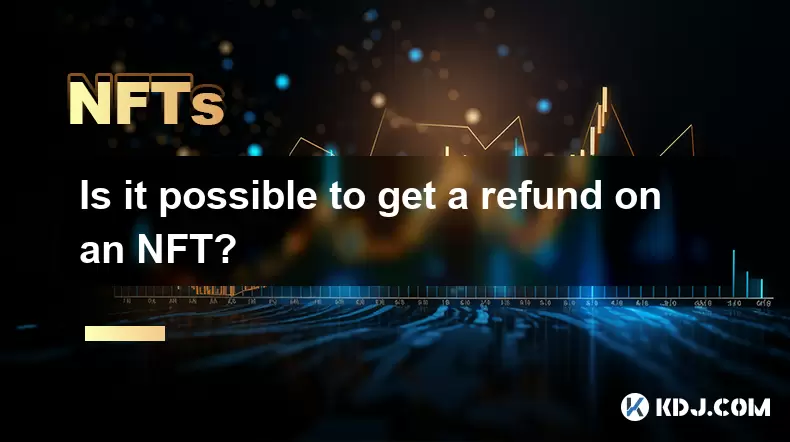
Is it possible to get a refund on an NFT?
Jul 21,2025 at 08:35pm
Understanding NFT Transactions and RefundsWhen you purchase an NFT (Non-Fungible Token), the transaction is typically recorded on a blockchain, making...
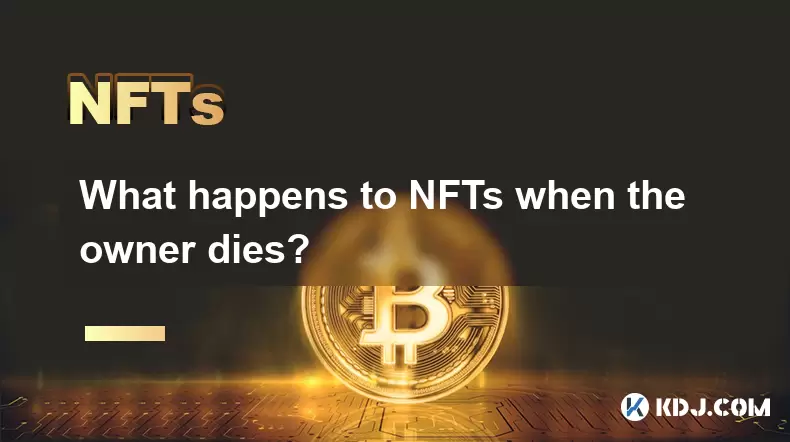
What happens to NFTs when the owner dies?
Jul 22,2025 at 02:43pm
Legal Ownership and Digital AssetsWhen an individual owns NFTs, the question of what happens to these assets upon their death is a pressing one. NFTs ...
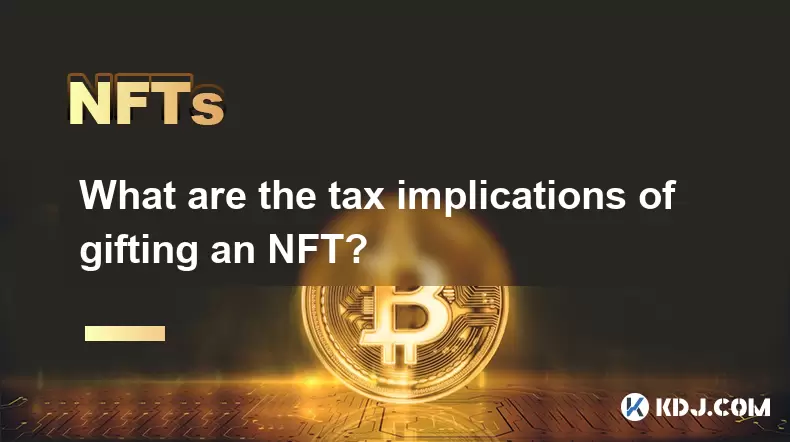
What are the tax implications of gifting an NFT?
Jul 19,2025 at 04:21am
Understanding the Basics of NFT GiftingGifting a Non-Fungible Token (NFT) involves transferring ownership from one individual to another without recei...
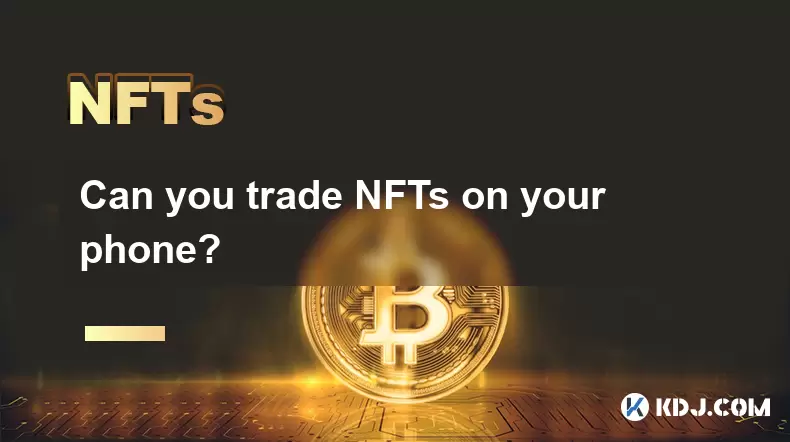
Can you trade NFTs on your phone?
Jul 18,2025 at 04:29am
Trading NFTs on Mobile DevicesYes, you can trade NFTs on your phone, and the process has become increasingly streamlined thanks to a variety of mobile...
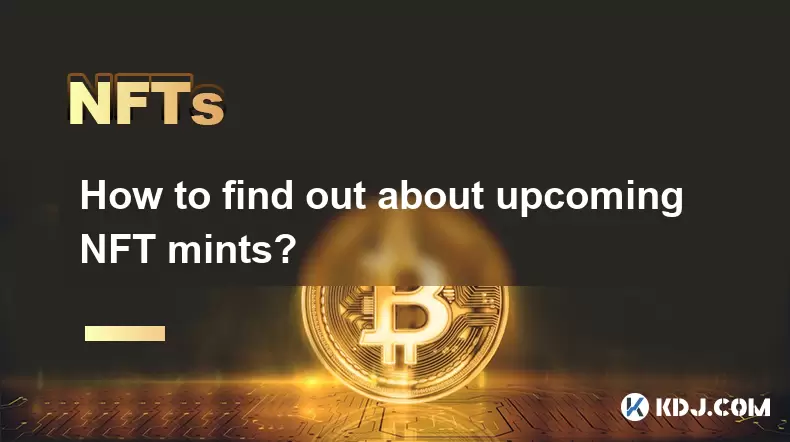
How to find out about upcoming NFT mints?
Jul 18,2025 at 11:50am
Exploring NFT Minting OpportunitiesUnderstanding the landscape of upcoming NFT mints is crucial for collectors, investors, and creators who wish to st...
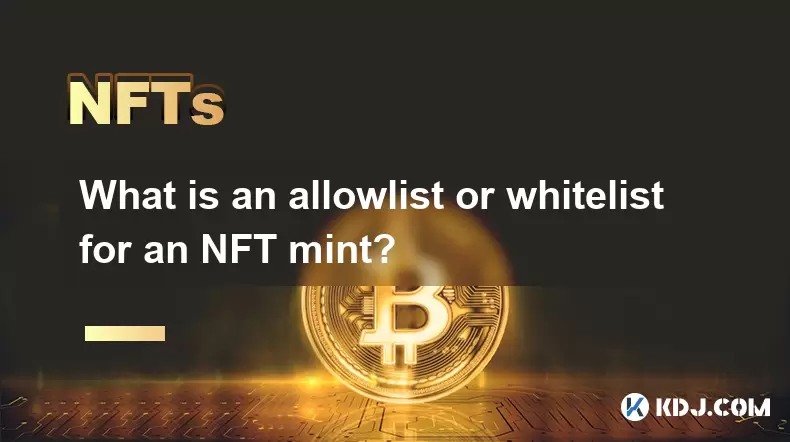
What is an allowlist or whitelist for an NFT mint?
Jul 20,2025 at 07:14pm
Understanding the Concept of an Allowlist for NFT MintingAn allowlist, also commonly referred to as a whitelist, is a mechanism used in the NFT mintin...

Is it possible to get a refund on an NFT?
Jul 21,2025 at 08:35pm
Understanding NFT Transactions and RefundsWhen you purchase an NFT (Non-Fungible Token), the transaction is typically recorded on a blockchain, making...

What happens to NFTs when the owner dies?
Jul 22,2025 at 02:43pm
Legal Ownership and Digital AssetsWhen an individual owns NFTs, the question of what happens to these assets upon their death is a pressing one. NFTs ...

What are the tax implications of gifting an NFT?
Jul 19,2025 at 04:21am
Understanding the Basics of NFT GiftingGifting a Non-Fungible Token (NFT) involves transferring ownership from one individual to another without recei...

Can you trade NFTs on your phone?
Jul 18,2025 at 04:29am
Trading NFTs on Mobile DevicesYes, you can trade NFTs on your phone, and the process has become increasingly streamlined thanks to a variety of mobile...

How to find out about upcoming NFT mints?
Jul 18,2025 at 11:50am
Exploring NFT Minting OpportunitiesUnderstanding the landscape of upcoming NFT mints is crucial for collectors, investors, and creators who wish to st...

What is an allowlist or whitelist for an NFT mint?
Jul 20,2025 at 07:14pm
Understanding the Concept of an Allowlist for NFT MintingAn allowlist, also commonly referred to as a whitelist, is a mechanism used in the NFT mintin...
See all articles

























































































